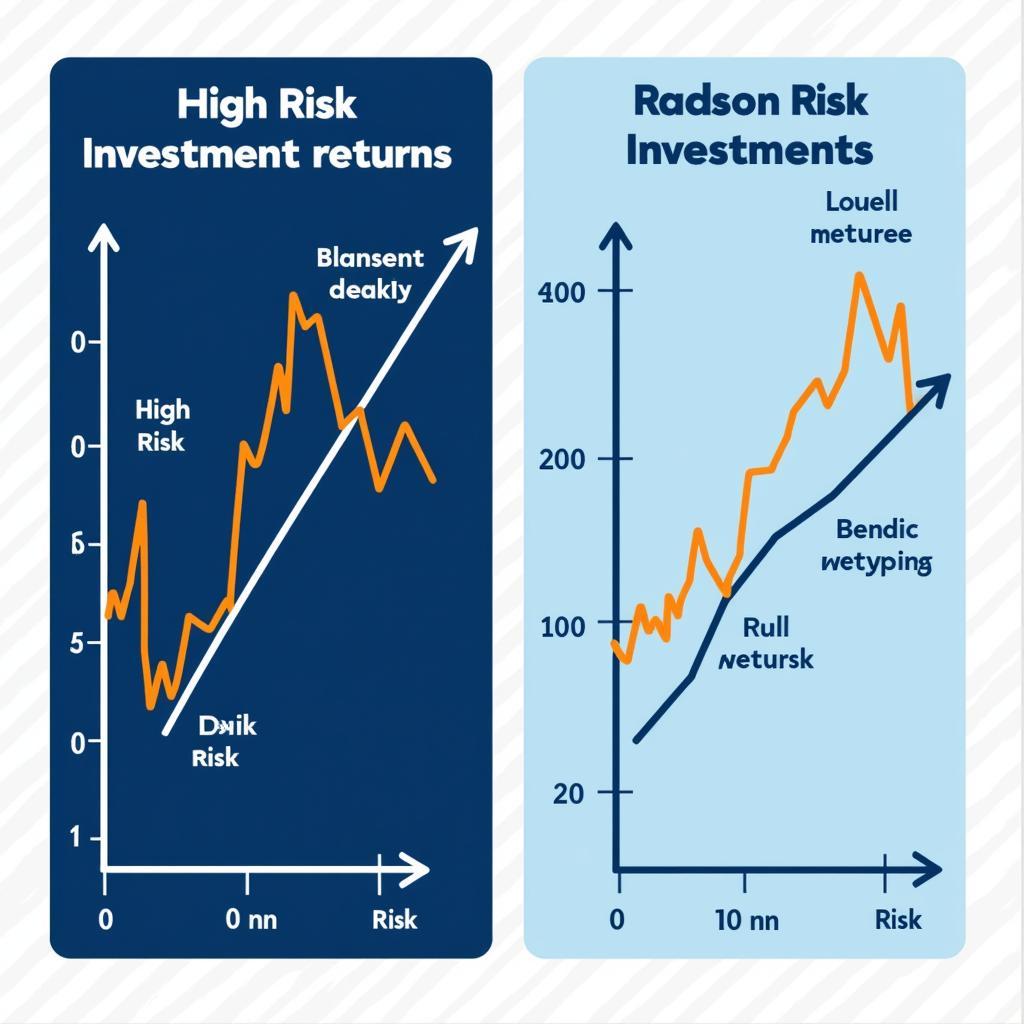Understanding how to maximize return on investments has become an increasingly important topic in IELTS Writing Task 2. Based on analysis of past exams, questions related to financial investments and economic decisions appear approximately every 3-4 months, making it a high-frequency topic that test-takers should prepare for.
Looking at importance of having diverse financial portfolios, we can see this theme commonly appears in various forms. Let’s examine a recent exam question:
Some people believe that individuals should invest most of their savings in high-risk investments for maximum returns, while others prefer low-risk options for financial security. Discuss both views and give your opinion.
Analysis of Question
This question requires:
- Discussion of two contrasting investment approaches
- Analysis of risks vs returns
- Personal opinion with supporting arguments
- Balanced examination of both perspectives
 Visual comparison of high-risk vs low-risk investment returns over time
Visual comparison of high-risk vs low-risk investment returns over time
Sample Essay 1 (Band 8.5)
The debate between high-risk and low-risk investment strategies has become increasingly relevant in today’s dynamic financial landscape. While some advocate for aggressive investment approaches to maximize returns, others emphasize the importance of capital preservation through conservative investments. In my opinion, a balanced approach that combines both strategies is most prudent.
Proponents of high-risk investments argue that substantial returns are necessary for long-term wealth accumulation. Technology startups and cryptocurrency investments, for instance, have generated extraordinary returns for early investors, sometimes yielding returns exceeding 1000%. Furthermore, with how inflation impacts stock market returns, high-risk investments may be necessary to maintain purchasing power over time.
However, advocates of conservative investment strategies emphasize the paramount importance of financial security. Low-risk investments like government bonds and blue-chip stocks provide steady, predictable returns while protecting capital. This approach particularly benefits those nearing retirement or with immediate financial obligations. The strategies for saving for major life events often rely on such stable investment vehicles.
In my view, the optimal approach combines both strategies through careful portfolio allocation. Young investors with longer time horizons might allocate a larger portion to high-risk investments, while maintaining a foundation of stable assets. This balanced strategy allows for potential high returns while providing a safety net against market volatility.
Sample Essay 2 (Band 6.5)
Many people have different ideas about how to invest their money. Some think high-risk investments are better, but others prefer safer options. I will discuss both sides and give my opinion.
High-risk investments can make more money. For example, when people invest in new companies or the stock market, they might get big profits. Many young people choose this way because they want to become rich quickly. Also, they have time to recover if they lose money.
On the other hand, low-risk investments are safer. People can put money in banks or buy government bonds. These investments give less profit but are more secure. Older people often choose this method because they cannot risk losing their savings. They need stable income for retirement.
I think both ways have good points. Maybe people should use both types of investments. Young people can take more risks, but they should also save some money safely. Older people should focus on safe investments but can put a small amount in high-risk options.
Scoring Analysis
Band 8.5 Essay:
- Sophisticated vocabulary: “dynamic financial landscape,” “capital preservation”
- Complex sentence structures
- Clear organization with cohesive devices
- Well-developed arguments with specific examples
- Balanced discussion with clear personal stance
Band 6.5 Essay:
- Basic vocabulary with some repetition
- Simple sentence structures
- Basic organization
- Limited development of ideas
- Less sophisticated examples
Key Vocabulary
- dynamic (adj) /daɪˈnæmɪk/ – constantly changing
- prudent (adj) /ˈpruːdənt/ – careful and wise
- volatility (n) /ˌvɒləˈtɪləti/ – tendency to change rapidly
- paramount (adj) /ˈpærəmaʊnt/ – most important
- allocation (n) /ˌæləˈkeɪʃən/ – distribution of resources
For practice, try writing your own essay on this topic or consider this alternative question:
“Some argue that government regulations on investments protect consumers, while others believe they limit economic growth. Discuss both views.”
Share your practice essays in the comments for feedback and improvement suggestions.


